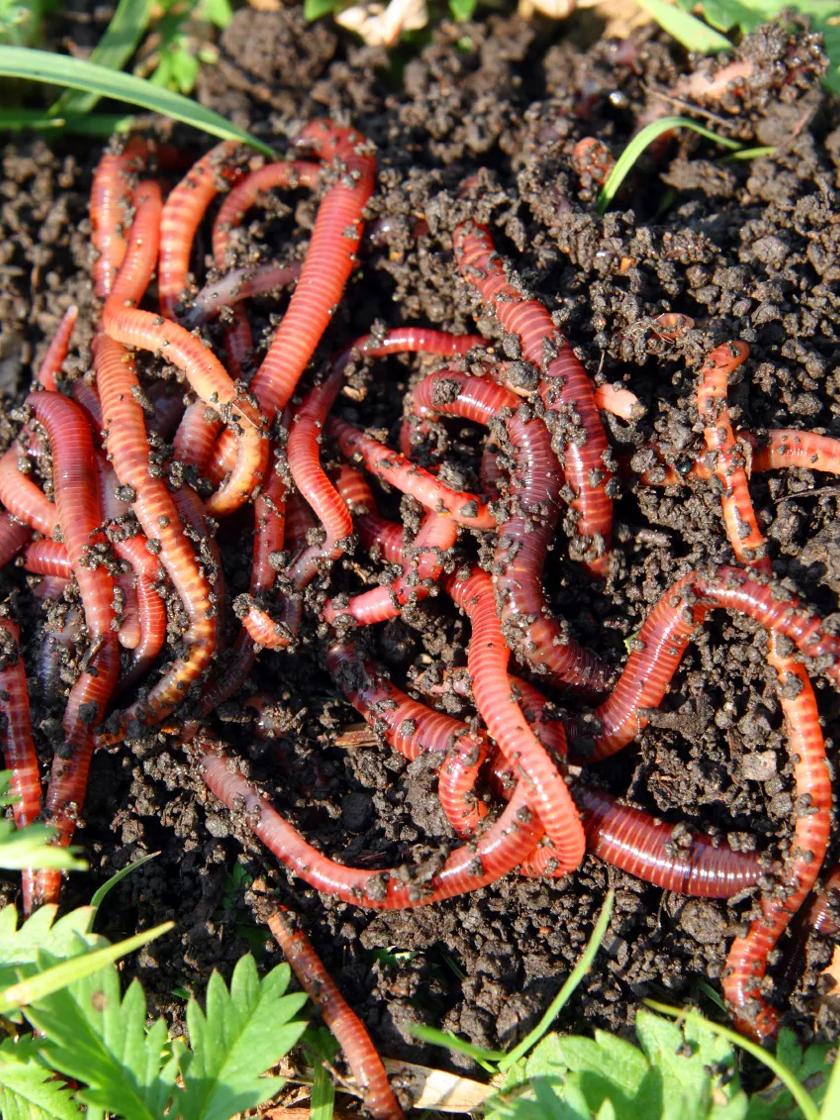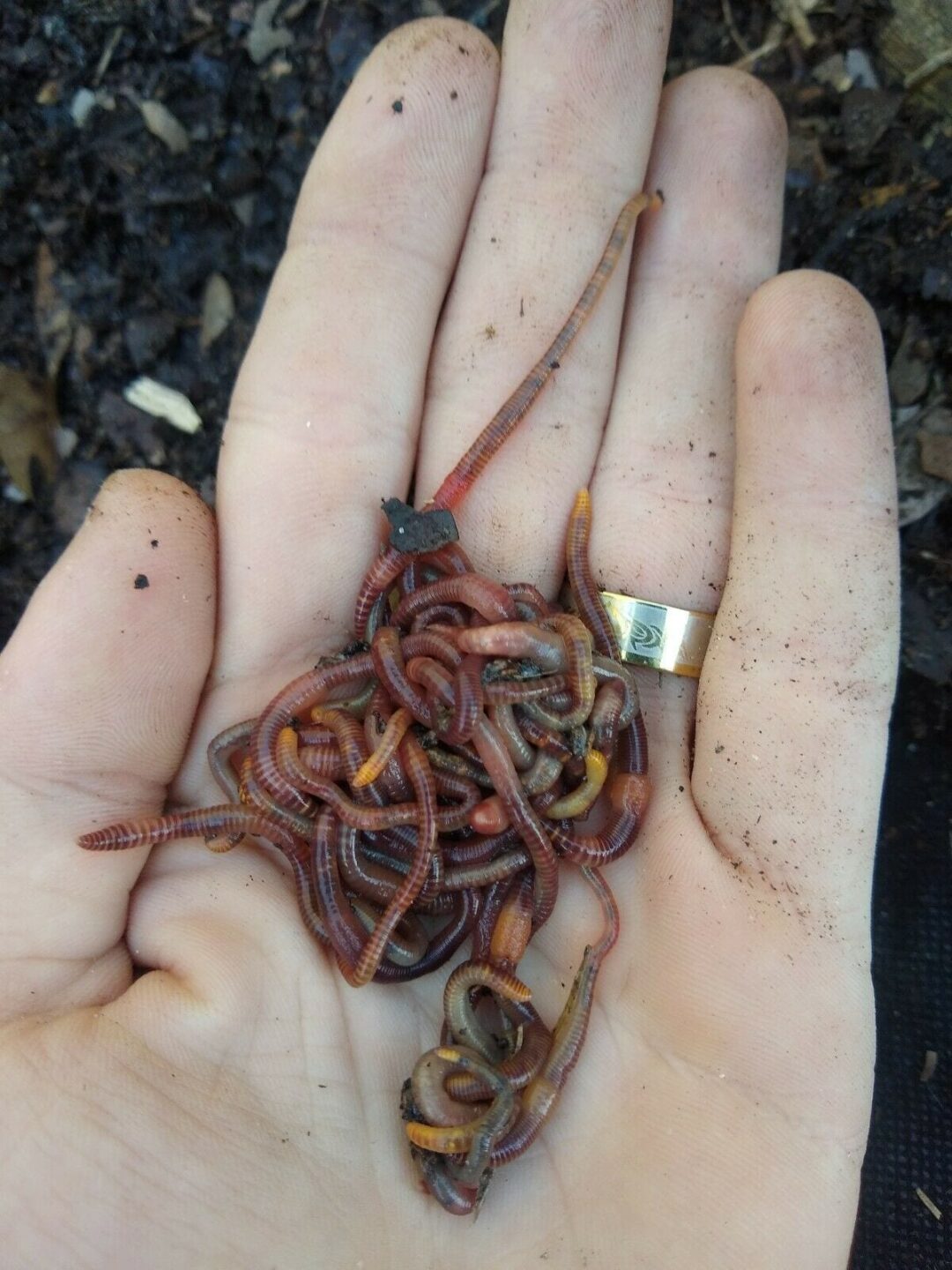Open the Keys of Red Wigglers: Your Overview to Composting Success
The combination of red wigglers into composting techniques provides a considerable possibility for improving dirt health and wellness and promoting sustainability. These microorganisms are not merely effective recyclers of natural waste; they offer a myriad of advantages that can transform yard monitoring. Comprehending their needs and habits is vital for optimizing their capacity, from setting up an ideal worm container to feeding them the right products. As we explore the important elements of successful vermicomposting, one might ask yourself just how these tiny animals can cause a much more dynamic and efficient garden ecological community.

What Are Red Wigglers?
(Red Wiggler Express)Red wigglers, scientifically referred to as Eisenia fetida, are a species of earthworm mostly used in composting as a result of their remarkable capability to decay raw material successfully. These worms are characterized by their reddish-brown pigmentation and a segmented body, commonly determining between 3 to 4 inches in length. Unlike various other earthworm varieties, red wigglers thrive in rich, natural environments, making them excellent for vermicomposting systems.
Belonging To The United States And copyright, they are typically found in decomposing leaves and compost heap, where they play an important role in nutrient recycling. Their adjustment to staying in a wet, cardio environment enables them to eat huge amounts of organic waste, simplifying into nutrient-rich castings that boost soil health and wellness.
Red wigglers recreate swiftly, with a single worm capable of producing numerous cocoons each week, each having numerous hatchlings. Comprehending the biology and behavior of red wigglers is necessary for optimizing their potential in composting applications.
Benefits of Utilizing Red Wigglers
Taking advantage of the power of red wigglers in composting offers numerous benefits that enhance soil health and promote lasting waste monitoring. These amazing organisms successfully break down raw material, changing kitchen scraps and backyard waste right into nutrient-rich vermicompost. This ended up product is incredibly valuable for plant growth, as it improves dirt framework, boosts dampness retention, and improves nutrition availability.

(Red Wiggler Express)Furthermore, the visibility of red wigglers in your composting system can increase the composting process, creating high-grade garden compost in a fraction of the moment compared to standard methods. The spreadings created by these worms are additionally teeming with valuable microbes that better improve the soil environment.
Establishing Your Worm Bin
Developing an effective worm container is a simple process that can significantly boost your composting initiatives. The very first step is choosing an appropriate container. Worm containers can be made from plastic storage space containers, wooden boxes, or commercially offered worm containers. Ensure the bin has adequate water drainage and air flow holes to preserve optimum moisture levels and air flow.
Following, prepare the bed linens product, which serves as the worms' habitat. A mix of shredded paper, cardboard, and coconut coir works well, giving a comfy environment for the worms.

Feeding Your Red Wigglers
To make certain the health and efficiency of your red wigglers, it is important to give them with a balanced diet plan that satisfies their dietary demands. Red wigglers prosper on a diverse array of organic products, which not only provide needed nutrients but also promote reliable composting.
Start by including kitchen area scraps such as veggie peels, fruit cores, and coffee grounds. Avoid citrus fruits, onions, and garlic, as these can be detrimental to worm wellness. In addition, introduce shredded paper, cardboard, and dry fallen leaves to develop a well-aerated setting.
Feeding frequency ought to be kept an eye on; normally, worms can consume half their body weight in food weekly. It is crucial to prevent overfeeding, as excess food can bring about unpleasant odors and draw in parasites. A great technique is to include food in percentages, allowing worms to refine it prior to presenting a lot more.
Keeping moisture degrees is additionally vital; the bedding must perspire but not soggy. Be certain to regularly inspect the temperature and pH levels of the bin to guarantee an ideal environment for your red wigglers, ultimately boosting their composting efficiency.
Harvesting and Making Use Of Garden Compost
An effective composting procedure with red wigglers culminates in the abundant, dark compost referred to as vermicompost, which can considerably improve dirt wellness and plant development. Harvesting this nutrient-dense product usually takes place every 3 to 6 months, relying on the size of your system and the quantity of raw material being processed.
To gather, gently separate the garden compost from the worms and any kind of undecomposed materials. One efficient technique includes moving the materials of the container away and adding fresh bedding and food to the void, encouraging the worms to migrate. After a couple of days, the compost can be gathered from the contrary side.
It is vital to make use of vermicompost properly to maximize its benefits. It can be utilized as a leading clothing for yard beds, blended into potting soil, or made into a nutrient-rich liquid plant food known as "worm tea." This application technique aids to supply important nutrients straight to plant roots, advertising healthier growth. By incorporating vermicompost into your gardening routine, you not only reuse organic waste but also produce a growing ecosystem that supports sustainable gardening methods.
Verdict
In summary, red wigglers offer as extraordinary allies in composting find more info efforts, transforming natural waste right into nutrient-rich vermicompost (Red Wiggler Express). Their special biological characteristics and reliable waste handling capabilities contribute significantly to lasting gardening methods. By recognizing the ideal conditions for their environment, feeding needs, and compost harvesting techniques, gardeners can boost soil health and advertise plant vigor. Welcoming vermicomposting not just decreases landfill waste but likewise cultivates a more ecologically liable approach to gardening and resource management.